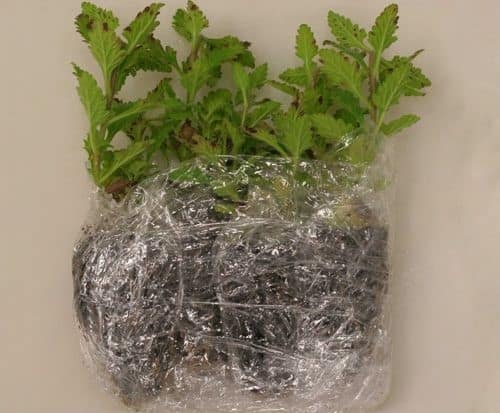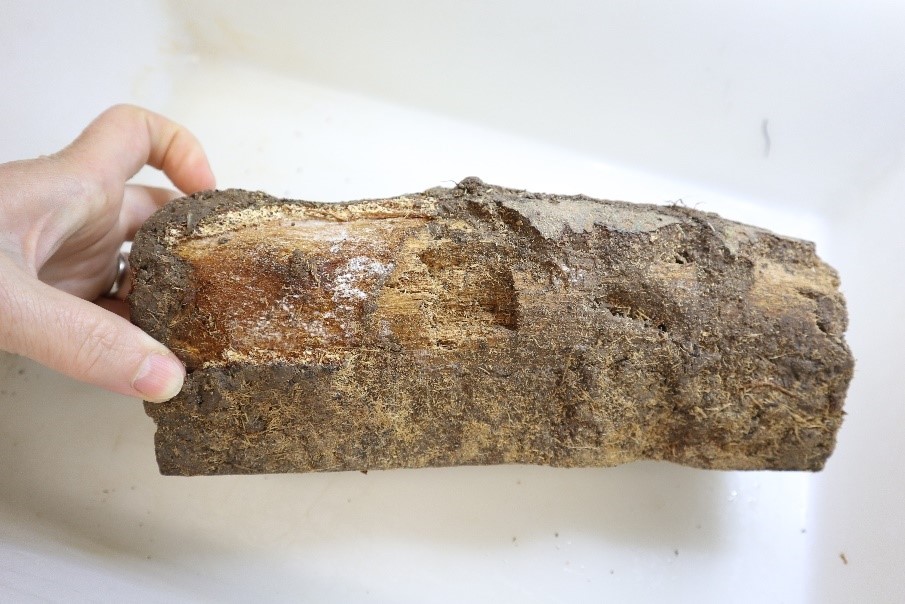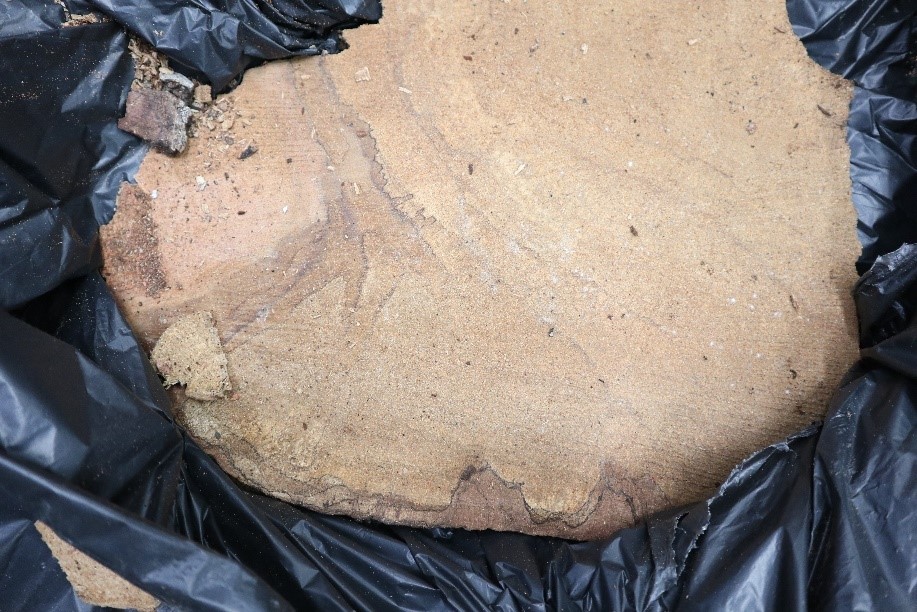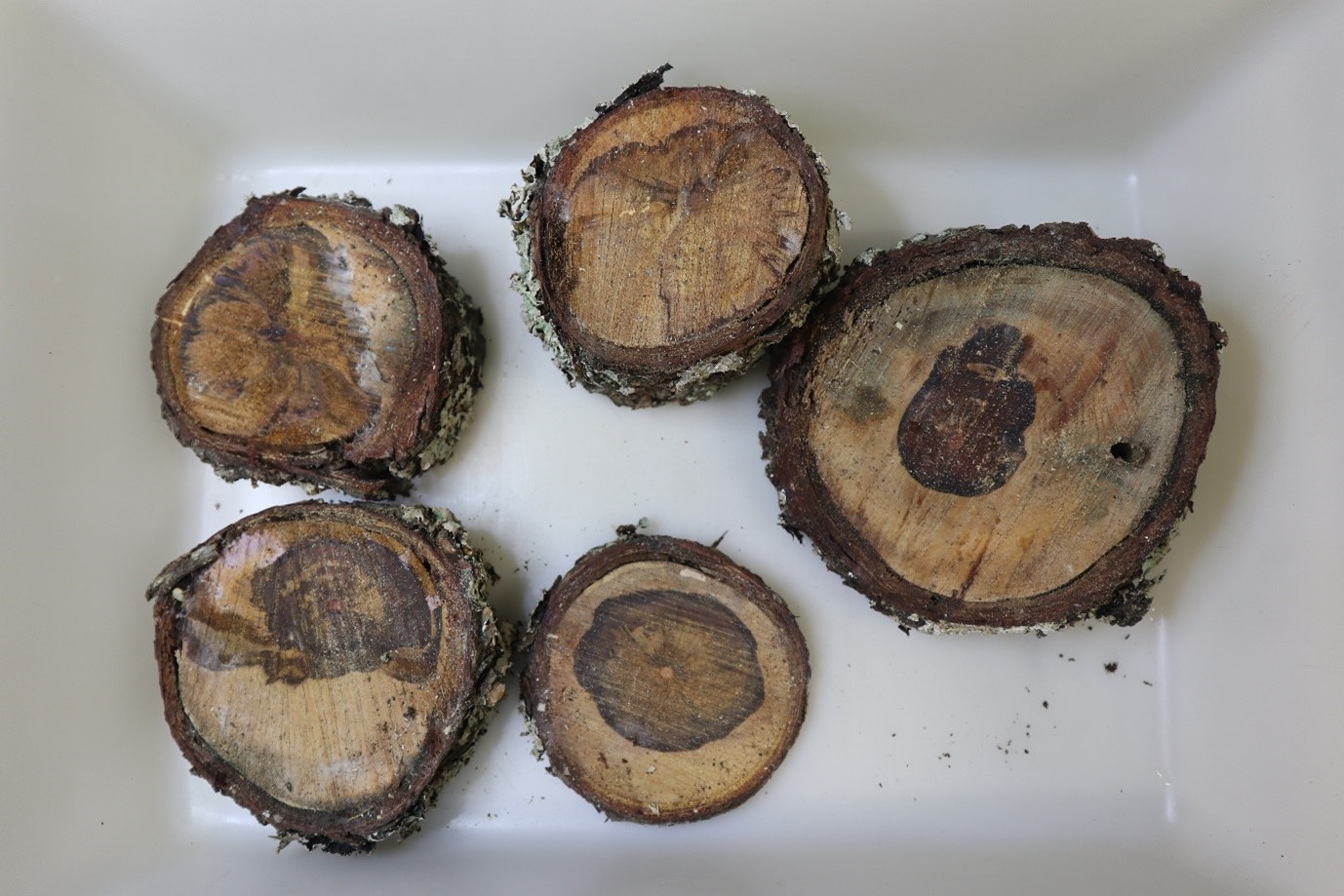Packaging plant samples for testing by Grow Help Australia
Make sure you:
- send correct plant material for pathogen detection
- package your samples as directed.
Otherwise, your sample may be unsuitable for testing.
If you are unsure:
- email photographs of the symptoms to growhelp@daf.qld.gov.au
- phone us on 13 25 23 for more information.
Choose suitable samples
Send both healthy and unhealthy plant specimens so we can compare symptoms. Include the margin between healthy and dying plant tissue: this is the area where the pathogens are active and most easily detected.
Send multiple plant samples so we have enough material to complete the tests.
Collect samples before applying fungicides. Fungicides inhibit fungal growth, making it harder for our tests to detect the pathogen. While some pathogens can still be detected, samples that have received recent fungicide applications are more likely to produce false negative results.
Do not submit
- Dead plants. They are full of bacteria and fungi feeding on the decaying organic matter which inhibits our ability to isolate a pathogen.
- Uncontained soil/growing media with plants (including loose soil and media). This can contaminate the above ground plant parts, seedlings or plugs. Bag root balls and/or containers as per below.
- Saturated samples. Wet samples increase the growth of secondary bacteria and fungi which inhibits our ability to isolate a pathogen. Most often, foliage survives transport better when dry. Wrap samples in paper (e.g. newspaper, paper towels, tissues) as required and contain them in a zip-lock bag.
- Samples with ice packs. Generally, ice packs in samples create condensation that promotes sample breakdown and contamination. If ice packs are critical, ensure you wrap samples in sufficient dry paper to soak up the condensation. Also, pack the sample to ensure the ice pack does not damage the sample in transport.
- Degraded fruit. This turns to 'mush' in even the best packaging.
- Easily crushed samples. Include packaging to keep the sample intact and in good condition.
- Bark from dying trees. We require the heartwood, as the pathogen will not be active in the bark.
- Samples treated with fungicides. Your samples should not have been treated with fungicides for at least 14 days before sending, particularly systemic products. Copper products can also inhibit detection of bacterial pathogens.
Package samples correctly
- Choose packaging that will not compress or damage your sample, especially if submitting fruit or delicate plant material.
- Do not send large glass containers (small tissue culture tubes are acceptable).
- Ensure the sample container weighs less than 15kg and can be lifted by 1 person.
- Protect your samples from degrading and from extremes of temperature.
Keep samples dry and uncontaminated
- Bag the root ball and contain the soil/growing media so that it does not contaminate foliage.
- Make sure the plant material will stay dry (the root ball can be moist).
- Add newspaper or paper towel to keep sample dry.
- Be careful when including ice packs, as condensation can break down the sample.
- Wrap samples in enough dry paper to soak up condensation from icepacks.
- Pack the sample to ensure the ice pack does not damage the sample in transport.
Guidelines for different plant types
-
What to send:
- Select multiple pots/plants showing initial and relatively advanced symptoms.
- Where possible, send multiple unhealthy plants of the same variety; this can increase our confidence that the problem is consistent across symptomatic plants.
- Tall plants: send the root ball, root crown (up to about 30–50cm above the ground) and growing tips if showing dieback or unusual symptoms.
Number of samples:
- Small seedlings and plants: at least 10 plants.
- Medium-sized plants (e.g. in 100mm pots): 4 plants.
- Large plants: 1 to 2 plants.
Packaging:
- Wrap the roots of individual plants then wrap the bases of all seedlings together.
- Bag the container and/or root ball to stop media from contaminating the entire sample.

Best practice for packaging a diagnostic sample of seedlings. -
What to send:
- Stems with tip dieback may also be helpful but are most often a result of root rot, crown rot or problems in the graft.
- The exact tissue is dependent on the type of symptoms observed and the age of the tree.
To test for dieback:
- Young in-ground trees: send the root ball (bagged separately), lower stem and graft union.
- Mature trees: send roots and soil (bagged separately), crown rot or canker material and/or branch dieback.
- On large branches or in the main trunk (crown) of large trees: cut 10cm wide cross sections or pie-wedge-shaped pieces of wood that contain the margin between healthy (normal wood colour) and unhealthy (discoloured) tissue.
Number of samples:
- Send material from multiple trees, if possible.
How to package:
- Ensure root ball and soil is bagged to avoid contaminating the sample.
-
What to send:
- For seedlings and small plants, send at least 10 whole plants.
- Mature crops depends on the symptoms:
- Crops experiencing dieback: submit the root ball, crown and at least the bottom 30–50cm of the plants. Stem tip dieback symptoms can also assist.
- Identifying leaf spot: submit stems with leaves attached. Submit multiple stems, preferably with each stem from a different plant.
- Unusual or deformed growth (including suspect virus infection): submit stems about 30–50cm long including the growing tips. However, sometimes including the roots and crown can be helpful.
How to package:
- Ensure that soil and root balls are bagged to avoid contamination.
-
What to send:
- Submit 5 to 10 fruit or vegetables whenever possible.
- If fruit are very large submit fewer, e.g. watermelon.
- Don't send cut fruit or vegetables as this will increase the rate at which they degrade.
- Do not select fruit that is likely to degrade into 'mush' during transport.
- Select specimens that show both diseased and adjacent healthy areas.
How to package:
- Contain the sample to avoid leakage.
- Package it to avoid it being crushed or damaged in transport.
Specific diseases and pests
-
Nematology testing is completed by the nematology team and may be charged separately. For information on testing of specific nematode pests, email growhelp@daf.qld.gov.au.
What to send:
- Collect about 300g of field moist soil to test for most pre-plant, plant-parasitic nematodes.
- If plants are to be tested for root nematode infection, submit infested roots and adjoining soil.
- For suspect foliar nematode infection, submit 5 to 10 crowns with new growth showing deformity.
How to collect:
- Ensure that the sample is made up of many smaller subsamples, randomly collected across the field.
- Do not refrigerate the soil; ice packs are not necessary.
- Do not allow the soil to get hot once sampled.
How to package:
- If both nematode and Phytophthora testing is required, please submit bags labelled separately.
- Do not include icepacks.
-
What to send:
- Collect sub-samples (adding up to a total of about 1kg) from across the plot by collecting a handful of soil/media and roots from at least 5 to 10 collection points or from compass points around large trees.
- Include symptomatic roots to increase our ability to detect Phytophthora.
- Also submit symptomatic plants, if possible.
How to collect:
- Scrape the dry topsoil aside.
- Collect relatively moist soil/media to a maximum depth of 15 to 30cm.
- Repeat for each sub-sample, preferably only from beneath symptomatic plants.
How to package:
- If both nematode and Phytophthora testing is required, submit bags labelled separately.
-
If you suspect it to be an exotic pest, call the Exotic Plant Pest Hotline on 1800 084 881.
Some groups we cannot identify as we do not have the required taxonomic expertise. Molecular tests are successful in identifying insects, but not always.
Australia Post and most couriers do not allow postage of 70% ethanol.
Small insects:
- Send live insects present on plant foliage in a zip-lock bag.
- Do not kill them.
Large insects, or insects that readily move off the plant:
- can be collected and killed in the freezer overnight
- after they are dead, wrap them in tissue paper and place them in a small container that will not be crushed or damaged in transport
- ensure that the insects will stay dry.
Contact us if you are unsure of the best method to send us insects or mites.
-
Virus symptoms can be confused with many different diseases and non-pathogenic disorders.
If you are unsure if the plant is infected with a virus, email growhelp@daf.qld.gov.au:
- multiple photographs—ensure they are in focus and of a suitable size (e.g. larger than 500KB)
- information about the host, where the crop is grown, and an indication of the incidence (frequency) and area over which symptoms occur. This may initially inform the likelihood of a viral infection and also the cost of testing.
If you have experience and suspect your plants are infected and would like to confirm a virus infection:
- send 6 to 10 stems, each about 30cm long
- include growing tips, each from a different plant
- wrap stems in dry paper placed in a zip-lock bag
- package stems to prevent crushing in transport
- contacting us, if in doubt.
-
Many pests and pathogens can cause dieback of particular plant species, or groups of plant species, across environmental landscapes (e.g. Phytophthora dieback).
If you are a ranger or council worker observing widespread, or localised but spreading dieback, email growhelp@daf.qld.gov.au with the history of your observations and photographs of the symptoms.
If you suspect an exotic pest is causing dieback, contact the Exotic Plant Pest Hotline on 1800 084 881.
-
Testing mature trees in urban and parkland settings for plant pathogens (e.g. Phytophthora, Phellinus and fungi from the family Botryosphaeriaceae) can be challenging and time consuming, and may not detect a pathogen even if it's the cause.
Professional arborists seeking pathogen testing, submit:
- soil for Phytophthora testing (as per above), bagged to contain the soil and stop contamination of the sample
- rotting roots, if present, preferably including roots with the margin between healthy and dead tissue (though this can be difficult to find). Bag roots to stop soil from contaminating the rest of the sample
- roots with soil 'stuck' to them (this is termed 'stocking'). Stocking can appear above or below ground and often will have white fungal growth present within, beneath it or within the root itself. These symptoms may indicate the presence of Phellinus
- wood sections with a honeycomb look about them and/or black lines or shoestring-like structures in the wood. Fungal growth moving up the bark of the tree trunk from ground level is known as a stocking. These symptoms may indicate the presence of Phellinus or Armillaria
- wedges or cross sections of large stems/branches with internal discolouration. Discolouration may appear as a blue stain or dark regions in the centre or outer areas of the heartwood. Cross sections should be about 5–10cm thick. If the stem is more than about 30cm in diameter, submit only a portion of the cross section (e.g. a wedge or half). Regardless, ensure that the section includes both healthy and dark, unhealthy tissue
- do not include soil or small bits of wood that can contaminate wood tissue unless they are bagged. We recommend wrapping individual pieces of wood in clean paper, paper towel or newspaper to keep them relatively fresh and free of debris.

Large root with stocking. A portion of the stocking has been removed to show fungal growth present underneath from which Phellinus was detected. 
Clean section of wood (about 30cm in diameter) with black fungal growth present. Phellinus was detected from this sample. 
Stem cross sections with necrotic heartwood from which fungi from the family Botryosphaeriaceae was detected.